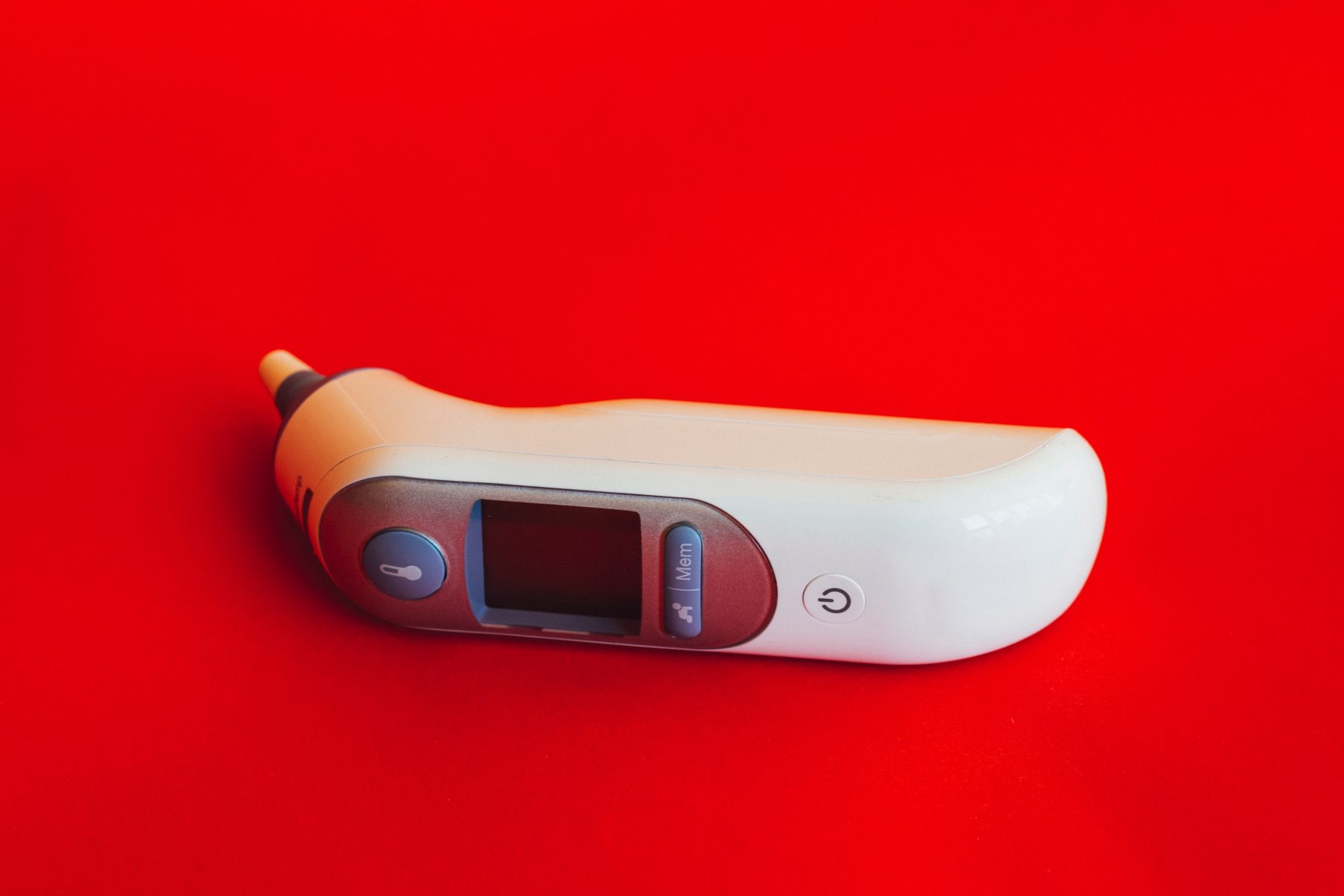How accurate are infrared thermometers and how are they used?

The main use of infrared (IR) thermometers is to measure temperature across various industrial and clinical environments. They are contact-free temperature measurement devices that perform especially well in situations where the object to be measured is fragile and dangerous to get close to, or when it’s not practical to use other types of thermometers.
A key thing to note about infrared thermometers is that they use the concept of infrared radiation to gauge the surface temperature of objects without any physical contact. In this article, we’ll be looking in more depth at exactly how accurate infrared thermometers are and what you need to consider when selecting one.
How does an infrared thermometer work?
In a similar way to visible light, it is also possible to reflect, focus, or absorb infrared light. An infrared thermometer will use a lens to focus the infrared light coming from the object onto a detector called a thermopile. The thermopile is simply a few thermocouples connected in series or parallel.
When the infrared radiation hits the thermopile surface it is absorbed and changed into heat. Voltage output is created in proportion to the incident infrared energy. The detector uses the output to work out the temperature, which is then shown on the screen.
This might sound like a complex process but when put into practice, it only takes the thermometer a few seconds to record the temperature and display it in your chosen unit.
How to get the most accurate results from an infrared thermometer
There has been widespread discussion regarding the accuracy of infrared thermometers. To make sure that you get the most accurate results, we have put together some quick tips to help with your quality control.
- Check that you know your thermometer’s distance-to-spot ratio (D/S ratio) and get close enough to the target so that it only checks the area you want it to measure.
- Keep in mind that dust and steam can impact the accuracy of infrared thermometers.
- Ensure your thermometer lens is clean and free of any scratches that could alter the results.
- Look out and account for shiny, “low emissivity” objects when using your thermometer.
- Allow enough time for your thermometer to accurately adjust to the temperature of its surroundings.
What do you need to consider when choosing an infrared thermometer?
Accuracy
As we’ve just been looking at above, the most important part of any thermometer is how accurate it is. The accuracy of infrared thermometers is based on the D/S ratio. This ratio shows the maximum distance from where the thermometer can measure a certain surface area.
For instance, if you are measuring the surface temperature of a 4-inch area with an infrared thermometer that has a D/S ratio of 8:1, the furthest distance from where you could get an accurate reading of the temperature will be 32 inches (8:1 x 4). Therefore, the bigger the ratios the further the distance you can measure the temperature from. However, when the distance is increased so too will the surface area.
Emissivity
The emissivity of an infrared thermometer is how much energy it can put out at any given time. IR thermometers that have emissivity closer to 1.00 can measure more materials than those with a lower emissivity value. It will be beneficial to choose a thermometer that comes with an adjustable emissivity level to slightly alter the amount of energy emitted and make up for the energy reflected by the material in consideration for measuring temperature.
Temperature range
An IR thermometer’s temperature range influences the work you can do with it. You might want to get a thermometer with a broad temperature range to capture different processes with different temperatures. On the other hand, a thermometer with a narrower temperature range is advantageous in cases where high resolutions are needed to ensure the proper temperature control of a specific process.
Reading speed
Reading speed is the time the thermometer takes to provide a clear and accurate reading after going through its reading process. This element is key when measuring the temperature of a moving object, or in situations where the objects are quick to warm up.
Design
When it comes to industrial temperature measurement, an IR thermometer should have a rugged design to get an accurate measurement. For example, no-lens and Fresnel lens thermometers are more durable thanks to their polymer structure, which is very effective in protecting them. By contrast, Mica lens thermometers require a more durable shell and a carrying case included in their design to stop the lens from cracking.
Conclusion
Infrared thermometers are invaluable for use whilst reading the temperature of a surface that is too difficult, dangerous, and practically impossible to reach. When positioned and used correctly they can be highly accurate and effective in their results as well as quick and easy to use. However, prior to choosing an infrared thermometer, it’s advisable to determine the temperature range of your application. If you need help with industrial temperature measurement in your operations, contact TRM today.